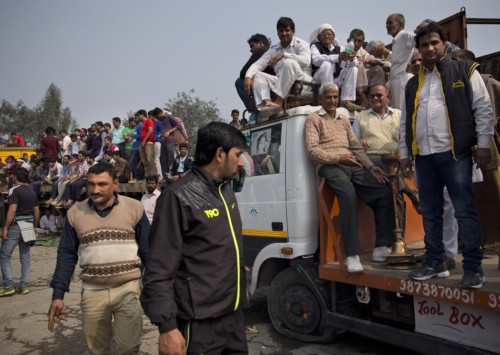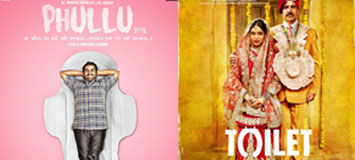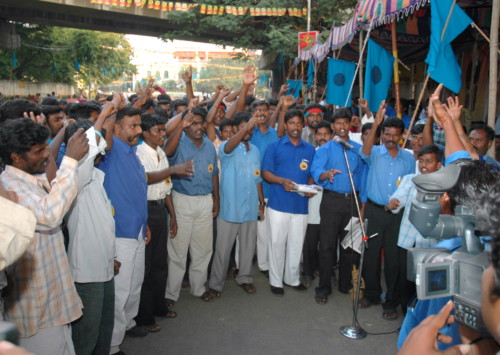Framing dalit presence in Indian cinema
In Indian cinema, the issue of caste was rarely a prominent subject with most film-makers and is rarely dealt with the seriousness and urgency it deserves. The marginalization that is a reality in the social space extends to the film world as well.
There have been a few films beginning with Franz Osten’s Achhut Kanya (The Untouchable Girl, 1936) to the more recent, Neeraj Ghaywan’s Masaan (2015) in which this contentious issue of caste is taken up and highlighted. In Indian cinema, the body of the dalit (a person of the lowest caste)- male and female, presents a stereotype contrast to the body of the upper caste Hindus, Muslims and Christians. The female body, particularly the young dalit women is represented as sexually attractive and desirable, thereby, an object to be used and subjugated by the upper caste. Most films, if not all, portraying dalit stories uses dalit body as a means to portray the power dynamics. This has been the case, generally, in most films made in Indian languages. However, the treatment of the dalit body has not been static; it kept changing according to the socio-political developments and dalit identity discourse.
When one comes to Indian cinema, one finds victimhood treated differently and this is true of the portrayal of dalits. Films about dalits appear to proceed from social preconceptions rather than unbiased observation. Indian cinema usually highlights the dalit only in terms of its relationship to caste society stems from Brahminical ideology. Dalit communities, like all other communities, would have conflicts of their own and also be rich in interpersonal relationships within, but this is not given expression to. The Indian film industry is yet to come to with a violence-free depiction of dalit life. The idea of dalit is usually synonymous to the idea of oppression.
“We as a film industry are just beginning to warm up to dalits in cinema. We have at least made a film on it, others don’t. And we are the 0.1 pc, a majority is not privileged. The idea of dalit is talking about oppression” Neeraj Ghaywan, the director of Masaan tells Media India Group. Here is a list of dalit cinema that left a mark in the Indian film industry-
Achut Kanya (1936)
This film was made at a time when caste discrimination was widely prevalent. Making a film where a young brahmin (a member of the highest caste) boy falls in love with an untouchable girl, this movie was one of the first that spoke about the caste system and the lives of dalit. There are four main dalit characters in the film that are depicted as dark-skinned a stereotype about the colour of dalit males. The other stereotype about dalit body is its impurity that is why they are perceived as untouchable. This stereotype has scriptural sanctity and even dalits accept this in the film. Though filled with stereotypes this was one of the early attempts in Bollywood to throw a light on the lives of the dalits.
Sujata (1959)
This brahmin-dalit love story was reprised by Bimal Roy and was based on a touching short story by Bengali writer Subodh Ghosh. Sujata was accepted both by audiences and critics, sweeping the Filmfare awards. This is the era when dalit movie was more widely accepted. This film was received well by the audience who experienced different realities.
Ankur (1974)
Moving away from love stories, Shyam Benegal’s Ankur depicted oppression through the lens of caste relationships in the Indian village. The film was a stark portrayal of the atrocities of the upper class on women in the feudal system of India’s villages. Ankur is a layered film and deals with issues of caste, sexism, patriarchy, privilege, hypocrisy, the ironies and vagaries of human nature in an extremely nuanced manner.
Sadgati (1981)
Not many directors can change one’s perception of life in a mere 45-minute movie, but then Satyajit Ray is not just any director and Sadgati is not just a mere 45-minute movie. A film like Sadgati reminds one of the harsh cruelties of the caste system which is a reality that exists even today, a reality that the society is not ready to face, much less counter. The main character in this movie is an embodiment of the caste segregation which labels people as untouchables who can be mistreated and be made to live as second rate citizens. Though meant for television, Sadgati paints a picture of the harsh reality of a dalit life without sugarcoating any experiences.
Fandry (2013)
Sairat director Nagraj Manjule’s earlier Marathi film, Fandry, tells the story of a teenage dalit boy who falls in love with an upper-caste girl. The movie was widely appreciated for the unbiased depiction of reality and the choice of cast members. It won the Indira Gandhi National Award for best debut film of a director.
Masaan (2015)
Dalit filmmaker Neeraj Ghaywan’s Masaan was a sign of the new wave in Hindi cinema that has brought a new understanding of Indian society to cine-goers. A sensitive, passionate tale about love across the class-caste divide in some of the more obscure parts of the country, it caught the attention of critics and audiences alike.













